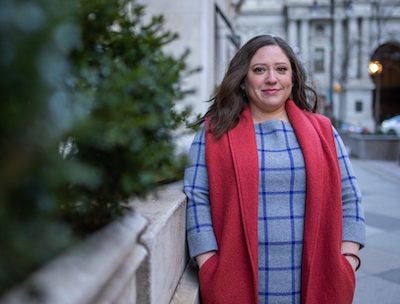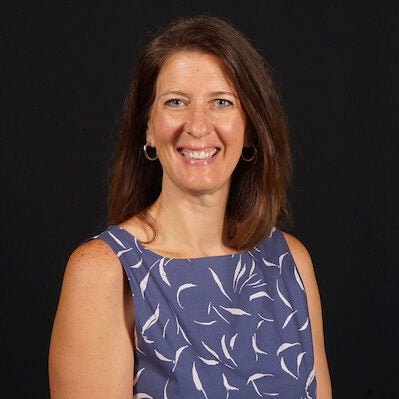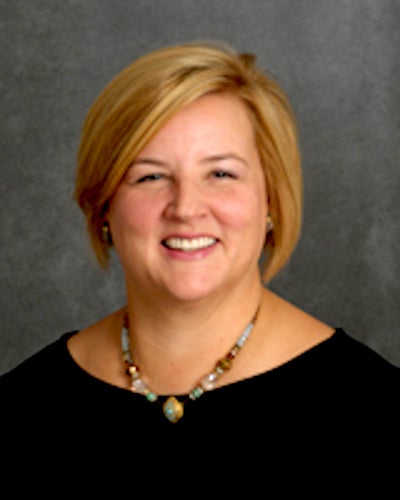Nurse-Midwifery/WHNP and WHNP Programs Build Health Equity Focus Into Curriculum
November 10, 2020 – For the past few years, the graduate-level Nurse-Midwifery/Women’s Health Nurse Practitioner and Women’s Health Nurse Practitioner Programs at the School of Nursing & Health Studies have worked to bring a more structured focus on health equity to the curriculum.
Professor Melicia Escobar and faculty colleague Dr. Christina Marea, in response to student feedback they had received, began an effort to develop a “health equity series” in 2016, one that is supported by Dr. Kelly Walker, program director, Professor Heather Bradford, course coordinator for the series, and several faculty members.

Melicia Escobar
“Christina and I were talking in between sessions,” Escobar recalled, referring to one of the students’ on-campus intensive sessions. “Our faculty are all great content experts across various topics. We started out with focuses on Jesuit values, racism and its effects on health, and gender-based violence.”
Over time, she added, the program has built sessions focused on human sexuality, affirming health care for LGBTQ+ patients, and fat-phobia and weight stigma.
Patient-Centered Practice
Bradford noted that the faculty aims to have facilitated, honest, and open conversations with their students through this series to ensure they are equipped to provide exceptional health care, including addressing sexual and gynecologic health care needs, to individuals from diverse backgrounds.
“This is one of the signature components of our curriculum,” Bradford said, noting that “it really helps to develop graduates who are person-centered and inclusive. That’s not something you’re going to necessarily get in a textbook.”
Dialogue, reflection, and sensitivity are key, she added.

Heather Bradford
“The series creates the opportunity for students to learn how to facilitate open conversations with patients, make mistakes, explore the words, and practice how to do this,” she said. “They practice with each other. We talk about [topics] very openly. We also prep the students ahead of time with a warning that, ‘This might be triggering.’ Talking about weight and interpersonal violence can be challenging. Some students might have to leave the room. There’s often tears. It’s sometimes hard to talk about these subjects.”
Bradford said, “We create a safe space that allows them to be really open and say, ‘This might be a stupid question, but I don’t know how to talk about this’ or ‘I don’t know what words to use.’ It’s been very well received by our students.”
Feeling Seen
Escobar also described how program faculty members work to help students see the broader ‘determinants of health’ that may be negatively impacting their patients.
“We’re talking about how to interact with the person in front of us,” she said. “But we’re also challenging students to think about the intersectionality that exists: What are the greater structures that are undermining this person’s wellness?”
The caring, collaboration, and dialogue are multidimensional, supporting relationships between faculty, faculty with their students, between students, and with patients.
“I feel that’s also our way of fostering cura personalis that supports the school’s mission,” Escobar said. “Student feedback is positive. We’ve had students of color say, ‘I feel seen for the first time in my nursing journey.’ And that’s not a small thing.”
‘Magic’ of the Faculty
Walker expressed admiration for the work of her faculty colleagues and their ability to create robust conversations on health equity-related topics with students.

Kelly Walker
“That’s the magic of what this program is,” she said. “It’s the importance of giving students the skills to go out in the community. What I’ve also observed is the skill of the faculty to be able to create these spaces where students have difficult conversations with one another. The faculty are really skilled and caring. As faculty, we’re trying to take good care of the people that we serve, which are the students.”
Moving forward, given the success of the series and the feedback they regularly collect from students, the program is hoping to scaffold the health equity content throughout the curriculum in order to allow the students to engage with related topics from when they enter the program until graduation and beyond.
Additionally, the team sees what they are developing as a model and applicable to other specialties and health fields.
“Everyone needs to know how to talk to someone in a higher body weight,” Walker said. “Everyone needs to address racism in their clinical practice. And everyone is going to be taking care of LGBTQ+ patients.”
By Bill Cessato
